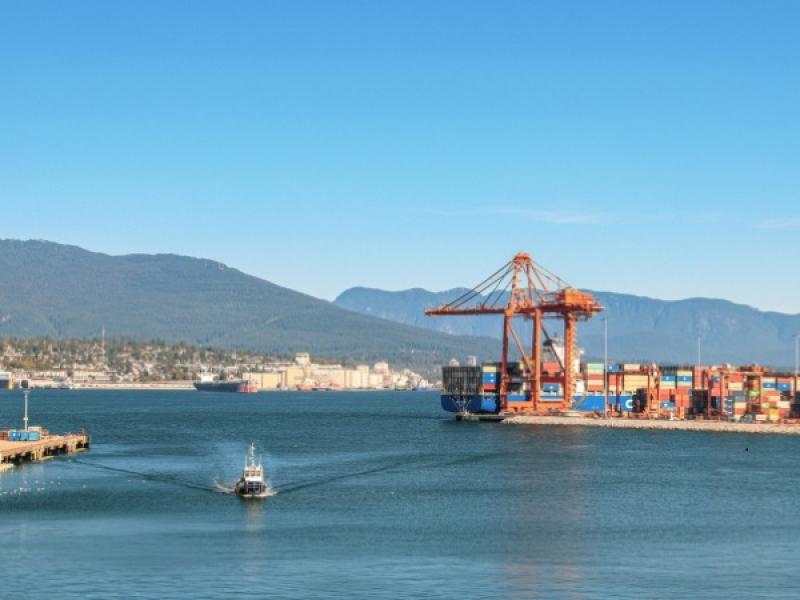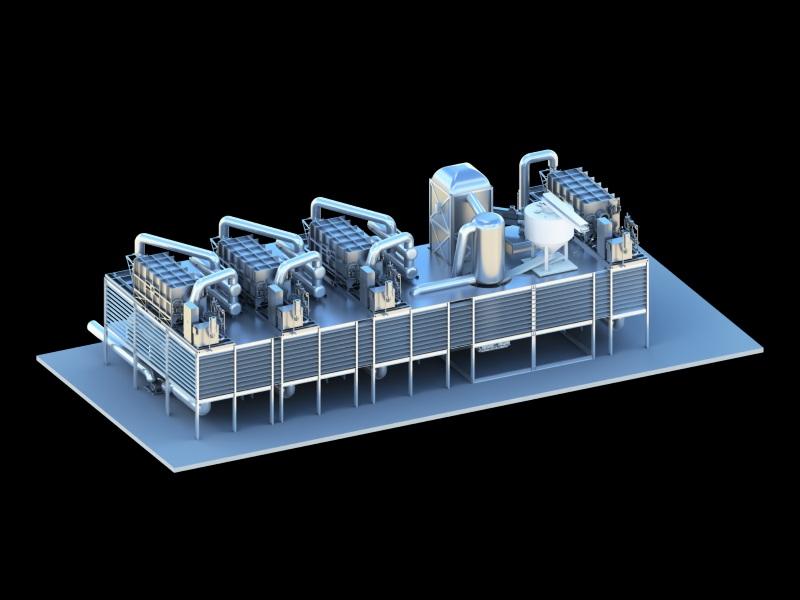
Ports can shift from being large sources of pollution to clean energy hubs, a report by London-headquartered professional services firm Arup and global climate network C40 Cities suggests.
Titled Ports as clean energy hubs, the analysis lays out a blueprint for ports and cities to play pivotal roles in the energy transition. It lists three opportunities: participating in the supply chain of offshore wind power, encouraging the adoption of low-carbon fuels, and electrification of infrastructure.
Ports “can drive investment, jobs, health and resiliency while supporting decarbonization,” Jo Balmer, the ports and maritime business leader for Arup in the Americas, said in an interview with Sustainable Biz Canada.
Shifting ports to clean energy hubs would mark a significant shift in the environmental impact of the maritime facilities. Ports and shipping are responsible for two to three per cent of the world’s greenhouse gas emissions, according to C40. Ports are also critical to the import and export of fossil fuels.
Three typologies for ports as clean energy hubs
Ports can transform into clean energy centres through conversions into infrastructure for sustainable fuels exports and refuelling.
An example of such an initiative in Canada is the federal government’s investment into the Halifax Port Authority, announced in February. The funding has been earmarked to support a hydrogen fuel production facility and enable the port to host and potentially refuel alternative fuel-powered vessels.
The second suggestion in the report is switching a port’s infrastructure and equipment from being powered by fossil fuels to electricity. Such a plan will demand the installation of charging equipment, plus on-site renewable energy generation, energy storage and microgrids.
Balmer named the expansion of the Port of Montreal as an example of electrification. The project will incorporate all-electric equipment on the site to bring down the operational carbon emissions.
The third option laid out in the report is to use ports as facilities for the manufacturing and maintenance of offshore wind turbines. “By doing so, the city, alongside the port, can attract mature supply chains to mitigate the potential impacts of short project cycles and future contract visibility,” the report states.
A port is not limited to only one solution and there are possible synergies from deploying two or three options, the report says. For example, ships docked at the Port of Vancouver can recharge systems with the city's hydroelectric grid. The port is also testing the use of low- and zero-emission fuels and technologies, and provides financial incentives to shipping lines that make voluntary green investments.
The possibility of deploying a mix of strategies will depend on the features of each port and what will work best, Balmer said.
“If you think about a city port, they may not actually have that much land around them to actually have facilities to put in a bunkering system,” she explained. Another potential issue could be limits to available electricity, Balmer added.
Navigating through the barriers

Investment into greener ports will attract billions of dollars in private capital, Balmer said, along with strengthening supply chains, creating jobs and diversifying exports.
But there are hurdles to these ambitions.
There are “unclear and complex” policies surrounding sustainable fuels, Balmer said, which leads to uncertainty. Other issues include the relative novelty of low-carbon fuels and the lack of regulations.
Planning complexity for energy generation and storage infrastructure, and insufficient grid infrastructure are potential problems for the electrification of ports.
The opportunity to make ports a key part of the offshore wind sector faces "prohibitive" investment needs and the possible shortage of available land adjacent to a port.
Supportive government policies, evolving regulations and maturing technology will be critical to overcoming the impediments, Balmer said.
She is also encouraged by the Canadian government’s Major Projects Office. Balmer noted two of the seven projects currently supported by the office are ports.
A group she is keeping a close watch on is the International Maritime Organization, which Balmer said is pushing for stronger regulations. She hopes those rules will be ratified at the upcoming COP30 climate conference in November in Brazil.
“The whole of this is going to rely on everybody working together for the end result, because nothing can be pushed through one in isolation without the others buying in," Balmer said.










